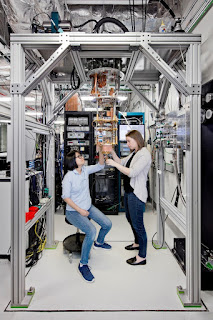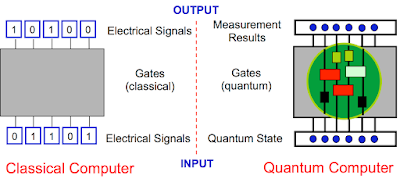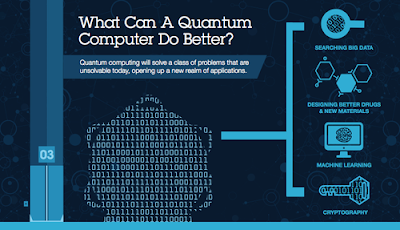Twitter Feed
Procurement in a Virtual Business World
Today, companies are undergoing a dramatic change in their environment and processes. Many groups these changes together as “Digital Transformation,” but that industry buzzword fails to describe the essential details…
Taking the Canadian Insurance Industry Digital
“Digital disruption isn’t just for hip start-ups. Incumbents can not only compete but actually lead radical industry change if they pay attention to the way their business model is shifting…
#DigitalTransformation Means Hybrid IT and Multipath
The cloud is ubiquitous in today’s business world. This operational model is changing both data center operations and application development processes across multiple domains. As the manager of data centers…
Wasabi Hot Innovations Tour: How “Hot Cloud Storage” Changes Everything!
Digital storage requirements are growing exponentially. Budgets simply can’t keep up and existing Federal Data Center Consolidation Initiative (FDCCI), “Cloud First” Policy, Federal IT Acquisition Reform Act (FITARA) and Modernizing…
(Lack of) Patch Management Highlighted in US Congress
According to the former Equifax CEO’s testimony to Congress, one of the primary causes of this now infamous data breach was the company’s failure to patch a critical vulnerability in…
Experience “The Big Pivot”
Graeme Thompson, SVP/CIO Informatica The Big Pivot Podcast explores Digital transformation and its effect on every business in every industry. In exploring the business benefits of data-driven transformation, it is…
Innovation At The Seams
by Kevin L. Jackson & Dez Blanchfield Today’s real business innovation is happening at the seams of industries. Moreover, after listening to this podcast between Sanjay Rishi, GM Global Cloud…
Digital Transformation & Intelligent Automation
By Kevin Jackson & Dez Blanchfield Digital Transformation often needs Intelligent Automation. This type of change is the focus of a recent “Pioneers of Possible” podcast. In discussion…
The Ascent of Object Storage
Over the past few years, the data storage market has changed radically. The traditional hierarchy of directories, sub-directories, and files referred to as file storage has given way to object…
The Deer Hunters: An Information Technology Lesson
by Kevin Jackson & Dez Blanchfield In episode four of the “Pioneers Of Possible” podcast series, Dez Blanchfield caught up with Max Michaels, General Manager, IBM Network Services in…
- The release of a new API (Application Program Interface) for the IBM Quantum Experience that enables developers and programmers to begin building interfaces between its existing five quantum bit (qubit) cloud-based quantum computer and classical computers, without needing a deep background in quantum physics.
- The release of an upgraded simulator on the IBM Quantum Experience that can model circuits with up to 20 qubits. In the first half of 2017, IBM plans to release a full SDK (Software Development Kit) on the IBM Quantum Experience for users to build simple quantum applications and software programs.
The IBM Quantum Experience enables anyone to connect to IBM’s quantum processor via the IBM Cloud, to run algorithms and experiments, work with the individual quantum bits, and explore tutorials and simulations around what might be possible with quantum computing. Since its launch less than a year ago, about 40,000 users have run over 275,000 experiments on the IBM Quantum Experience. It has become an enablement tool for scientists in over 100 countries and, to date, 15 third-party research papers have been posted to arXiv with five published in leading journals based on experiments run on the Quantum Experience.
 The broad availability of quantum computing capability could prove to be a significant blow to current data encryption practices. In 2015 the US National Security Agency actually advised US agencies and businesses to prepare for a time when the cryptography protecting virtually all e-mail, medical and financial records, and online transactions would be rendered obsolete by quantum computing. The US National Institute for Standards and Technology (NIST) is also running a competition to spur work on post-quantum algorithms.
The broad availability of quantum computing capability could prove to be a significant blow to current data encryption practices. In 2015 the US National Security Agency actually advised US agencies and businesses to prepare for a time when the cryptography protecting virtually all e-mail, medical and financial records, and online transactions would be rendered obsolete by quantum computing. The US National Institute for Standards and Technology (NIST) is also running a competition to spur work on post-quantum algorithms. - Drug and Materials Discovery: Untangling the complexity of molecular and chemical interactions leading to the discovery of new medicines and materials;
- Supply Chain & Logistics: Finding the optimal path across global systems of systems for ultra-efficient logistics and supply chains, such as optimizing fleet operations for deliveries during the holiday season;
- Financial Services: Finding new ways to model financial data and isolating key global risk factors to make better investments;
- Artificial Intelligence: Making facets of artificial intelligence such as machine learning much more powerful when data sets can be too big such as searching images or video; or
- Cloud Security: Making cloud computing more secure by using the laws of quantum physics to enhance private data safety.
This content is being syndicated through multiple channels. The opinions expressed are solely those of the author and do not represent the views of GovCloud Network, GovCloud Network Partners or any other corporation or organization.
( Thank you. If you enjoyed this article, get free updates by email or RSS – © Copyright Kevin L. Jackson 2017)
Cloud Computing
- CPUcoin Expands CPU/GPU Power Sharing with Cudo Ventures Enterprise Network Partnership
- CPUcoin Expands CPU/GPU Power Sharing with Cudo Ventures Enterprise Network Partnership
- Route1 Announces Q2 2019 Financial Results
- CPUcoin Expands CPU/GPU Power Sharing with Cudo Ventures Enterprise Network Partnership
- ChannelAdvisor to Present at the D.A. Davidson 18th Annual Technology Conference
Cybersecurity
- Route1 Announces Q2 2019 Financial Results
- FIRST US BANCSHARES, INC. DECLARES CASH DIVIDEND
- Business Continuity Management Planning Solution Market is Expected to Grow ~ US$ 1.6 Bn by the end of 2029 - PMR
- Atos delivers Quantum-Learning-as-a-Service to Xofia to enable artificial intelligence solutions
- New Ares IoT Botnet discovered on Android OS based Set-Top Boxes




